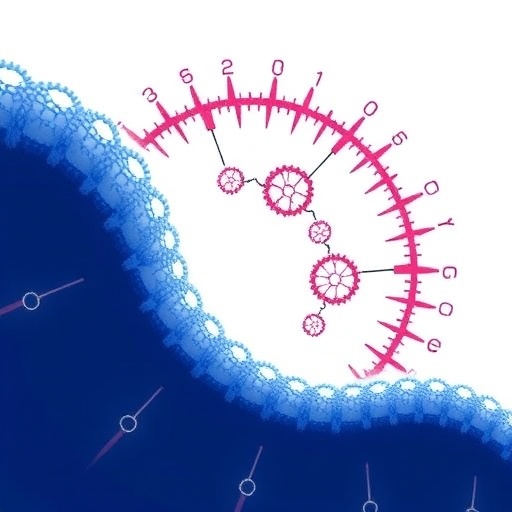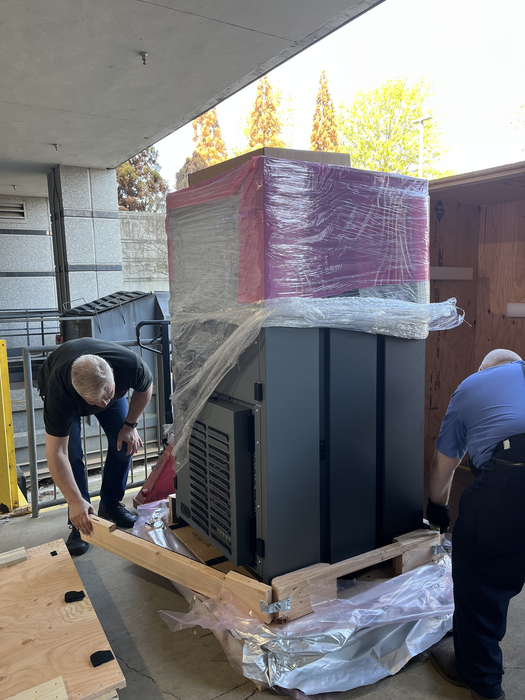In a groundbreaking study, researchers delve into the intricate world of circular RNAs (circRNAs) and their pivotal role in the development of skeletal muscle in Huaxi cattle. This investigation sheds light on the molecular mechanisms underpinning muscle maturation and the prominent impact of circRNAs in this process. The study highlights how understanding these non-coding RNAs may pave the way for innovative approaches in livestock breeding and muscle growth enhancement.
Cattle, known for their contributions to agriculture, possess unique muscle growth characteristics. Among various breeds, the Huaxi breed stands out, demonstrating exceptional qualities in terms of meat yield and quality. However, the molecular genetics behind their muscle development has not been thoroughly explored. In this context, the current study aims to clarify the role of circRNAs—previously acknowledged for their regulation of gene expression—in the growth of skeletal muscle in Huaxi cattle.
Circular RNAs, a class of non-coding RNAs characterized by a covalently closed loop structure, have garnered significant attention from the scientific community in recent years. Unlike linear RNAs, circRNAs are resistant to exonuclease degradation, granting them stability and longevity within cells. This structural feature allows them to perform diverse functions, including sponging microRNAs and interacting with RNA-binding proteins, which can subsequently influence gene expression.
The methodology employed in this research was both robust and comprehensive. Utilizing high-throughput RNA sequencing technology, the researchers profiled circRNA expression across various stages of skeletal muscle development in Huaxi cattle. Samples were meticulously collected, allowing for a dynamic analysis of circRNA levels as muscle tissues transitioned from early developmental stages to maturity. The sequencing data provided an exhaustive catalog of candidates to investigate further, revealing intriguing patterns of circRNA expression that correlated with muscle growth phases.
Among the prominent findings, the study identified a multitude of circRNAs that exhibited differential expression patterns throughout the muscle development process. Notably, specific circRNAs were markedly upregulated during key stages, suggesting a prominent regulatory role in muscle hypertrophy and differentiation. Hence, the researchers speculate that these circRNAs may serve as critical components in the orchestration of muscle growth, potentially influencing cellular pathways associated with myogenesis.
In addition to identifying circRNAs, the study also examined their potential interactions with microRNAs. This aspect is fundamental, as microRNAs have emerged as major players in post-transcriptional gene regulation. By acting as sponges for microRNAs, certain circRNAs can deactivate their functions, thus modulating target gene expression. This interplay between circRNAs and microRNAs presents an exciting avenue for exploring genetic regulatory networks that govern muscle development.
The implications of these findings are monumental. With an enhanced understanding of circRNA dynamics, it becomes possible to strategize genetic selection methods that favor favorable traits in livestock breeding. This convergence of molecular biology and agriculture could lead to significant advancements in meat production, addressing global food security challenges in a sustainable manner. The potential to enhance muscle growth efficiency through genetic insights may revolutionize practices in cattle farming.
Remarkably, the research team also emphasizes the evolutionary conservation of certain circRNAs found within Huaxi cattle. This suggests that not only are these RNAs significant in this particular breed, but they may also hold importance across various species, hinting at a universal role in muscle biology. Such discoveries could inspire further studies on circRNAs in other livestock and perhaps even in broader animal models.
As the study draws attention to circRNAs, it also highlights the need for future research to delve deeper into their functional mechanisms. Understanding how these molecular entities interact with other cellular components can refine genetic manipulation techniques and improve breeding practices. Such advancements could foster a new era in which traits like growth rate, muscle quality, and overall animal health are optimized through informed breeding decisions.
Crucially, the research showcases the transformative power of modern genomic techniques in unraveling complex biological processes. By leveraging cutting-edge technologies such as RNA sequencing, scientists can unveil the multifaceted roles of circRNAs, providing insights into previously obscured biological pathways. This approach serves as a cornerstone for future investigations aimed at enhancing livestock resilience and productivity.
Moreover, public fascination with biotechnology and genetic research has surged in recent years—a trend that this study capitalizes on. As society grapples with the ethical aspects of genetic modification, understanding the natural regulatory mechanisms within organisms, like circRNAs, could foster acceptance and pave the way for innovative agricultural solutions.
In closing, the exploration of circRNAs in the context of Huaxi cattle muscle development is not merely an academic exercise. It represents a step toward leveraging biological research for practical applications that transcend basic science. As we witness the convergence of genomics and traditional agriculture, the potential for creating livestock that can thrive in changing environments becomes increasingly viable, benefiting global food production and security.
This important study lays the groundwork for future research initiatives aimed at expanding our understanding of muscle development across species. With further exploration, circRNAs may reveal secrets that enhance not just livestock production but also human health, as we continue to unveil the intertwined narratives of genetic regulation and development.
In conclusion, the examination of circRNAs presents a promising frontier in genetic research that could transform how we approach muscle growth in livestock. By prioritizing molecular insights into muscle development, the agricultural sector can harness these findings to produce stronger, healthier animals while addressing the pressing demands of an ever-changing world.
Subject of Research: The role of circular RNAs in the development of skeletal muscle in Huaxi cattle.
Article Title: Exploring the landscape of circular RNAs in the development of skeletal muscle in Huaxi cattle.
Article References: Hu, X., Jiang, F., Cheng, H. et al. Exploring the landscape of circular RNAs in the development of skeletal muscle in Huaxi cattle. BMC Genomics 26, 919 (2025). https://doi.org/10.1186/s12864-025-11971-6
Image Credits: AI Generated
DOI: 10.1186/s12864-025-11971-6
Keywords: circular RNAs, skeletal muscle development, Huaxi cattle, gene expression, livestock breeding, muscle hypertrophy, RNA sequencing, microRNA, genetic research.
Tags: agriculture and cattle genetics researchcircRNAs and microRNA spongingcircular RNA stability and longevitycircular RNAs in skeletal muscle developmentgene expression regulation by circRNAsHuaxi cattle muscle growth characteristicsimplications of circRNAs in livestock improvementinnovative approaches in meat yield enhancementmolecular mechanisms of muscle maturationmuscle development in cattle breedsnon-coding RNAs in livestock breedingRNA-binding proteins interactions






